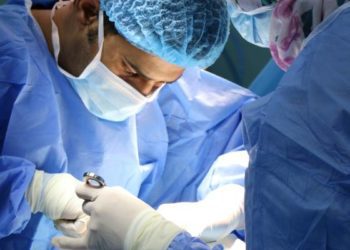Double-opposing Z-plasty may improve cleft palate outcomes
1. Furlow, double-opposing Z-plasty produced better outcomes than traditional straight-line, intravelar veloplasty closure in both isolated cleft palate and unilateral cleft lip-cleft palate groups.
2. No difference was found between the Furlow, double-opposing Z-plasty and straight-line, intravelar veloplasty techniques with regard to fistula or other complication rates.
Evidence Rating Level: 2 (Good)
Study Rundown: There are several surgical techniques available for the repair of cleft palate, the most common being straight-line, intravelar veloplasty and Furlow, double-opposing Z-plasty. Despite the wealth of literature on palate repair techniques, studies comparing outcomes for different surgical techniques are limited. In this study, the authors aimed to compare the surgical outcomes and complication rates between the Furlow, double-opposing Z-plasty and straight-line, intravelar veloplasty techniques. They found that the mean failure rates were much greater with straight-line, intravelar veloplasty compared to Furlow, double-opposing Z-plasty and the need for secondary surgery was significantly higher in the straight-line, intravelar veloplasty group. Despite prior criticisms that the Furlow method results in higher fistula rates, this study did not show a statistically significant difference in fistula rates between the 2 groups. An important strength of this study is its large sample size. However, study limitations include inherent variability. Although this study is not the first to compare different surgical techniques for the repair of cleft palate, it highlights the potential benefit of Furlow, double-opposing Z-plasty in cleft palate patients.
Click to read the study in Plastic and Reconstructive Surgery
Relevant Reading: Evaluation of two palate repair techniques for the surgical management of velopharyngeal insufficiency
In-Depth [systematic review]: This systematic review included 11 retrospective studies and a prospective, randomized, clinical trial. A comprehensive search of standard research databases including MEDLINE, Ovid and Embasem was completed. All included patients had: 1) an isolated cleft palate or unilateral cleft lip-cleft palate, 2) straight-line, intravelar veloplasty or Furlow, double-opposing Z-plasty, 3) cleft palate repair done between 9 to 18 months of age, and 4) last follow-up after 4 years of age. Failure rates were defined as velopharyngeal insufficiency, which was measured by the intention (performed or recommended) to undergo surgery and hypernasality. Statistical analyses revealed that straight-line, intravelar veloplasty was associated with 1.94x and 1.64x increased risks of a secondary operation in the isolated cleft palate group (95%CI, 0.96 to 3.91; p=0.065) and the unilateral cleft lip-cleft palate group (95%CI, 1.05 to 2.58; p=0.030), respectively. The overall oronasal fistula rate was 7.87% in the Furlow group compared with 9.81% in the straight-line, intravelar veloplasty group (p=0.14).
More from this author: Elective neck dissection may be unnecessary for adenoid cystic carcinoma, Admission may not be needed following sleep apnea surgery, Damage similar in each eye after sequential ischemic optic neuropathy, Animal regenerative matrix appears safe in breast reconstruction
Image: CC/Heilman/Wiki
©2012-2014 2minutemedicine.com. All rights reserved. No works may be reproduced without expressed written consent from 2minutemedicine.com. Disclaimer: We present factual information directly from peer reviewed medical journals. No post should be construed as medical advice and is not intended as such by the authors, editors, staff or by 2minutemedicine.com. PLEASE SEE A HEALTHCARE PROVIDER IN YOUR AREA IF YOU SEEK MEDICAL ADVICE OF ANY SORT.







